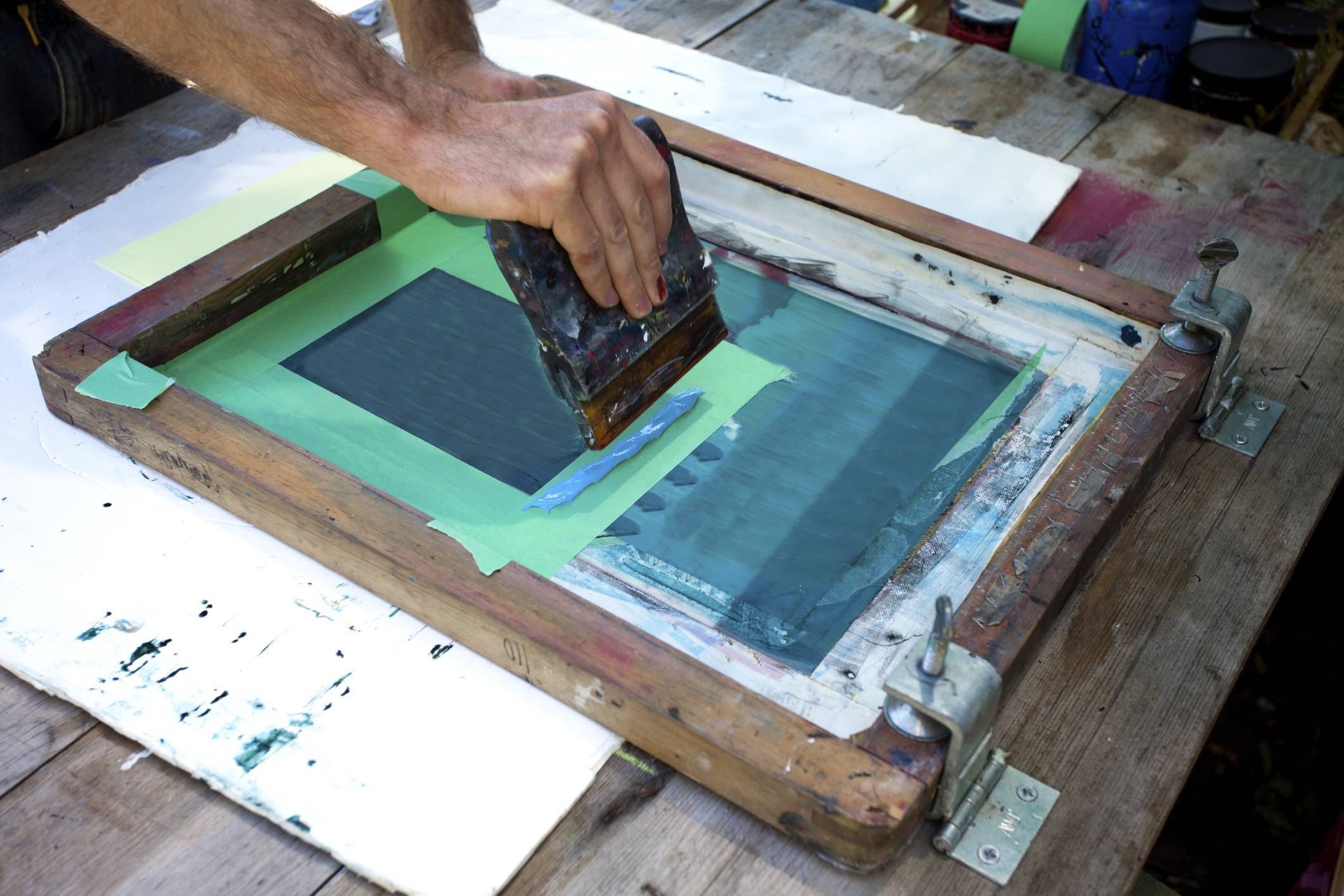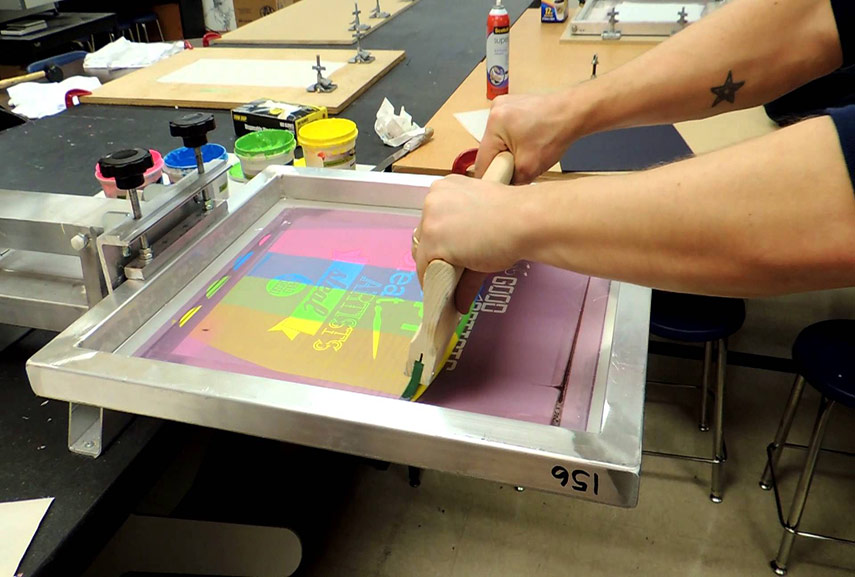ChatGPT said: How to reach 10:9 Design contact for service inquiries
Wiki Article
The Necessary Overview to Comprehending Screen Printing and Its Versatile Utilizes
Screen printing has an abundant background that goes back to old times, progressing right into an innovative strategy made use of throughout different markets today. This guide explores the intricacies of the screen printing procedure, outlining its applications in fashion, home, and advertising and marketing décor - 10:9 Design Company. Comprehending these principles can open creative potential for both imaginative and industrial projects. The complying with areas will reveal necessary pointers and strategies to enhance one's screen printing endeavorsThe Background of Screen Printing
Screen printing has origins that map back centuries, its advancement reflects the technological and artistic developments of numerous cultures. Coming from old China, the method was at first utilized for decorating textiles and later infect Japan, where it came to be important to Ukiyo-e woodblock printing. The technique shifted to Europe in the 18th century, where it acquired popularity amongst craftsmens and business printers. The creation of photo emulsion in the 20th century changed screen printing, enabling more intricate layouts and better effectiveness. Artists like Andy Warhol further moved its appeal, utilizing the medium to produce renowned works that combined commercialism and art. By the late 20th century, screen printing had established itself as a flexible technique, used in vogue, advertising, and art. Today, it remains to advance, integrating electronic modern technology and broadening its applications across various sectors.The Screen Printing Refine Explained
Screen printing transforms imaginative visions right into tangible layouts via a series of precise steps. A photo is developed and then moved onto a screen, typically made of great mesh fabric stretched over a frame. A light-sensitive solution is used to the screen, which is revealed to light, setting in areas not covered by the photo. After rinsing the unhardened emulsion, a stencil is created.Next off, the screen is placed over the substrate, whether it be material, paper, or an additional material. Ink is after that pressed via the open areas of the stencil using a squeegee, depositing the style onto the substratum listed below. This procedure can be duplicated for multiple colors, needing different displays for each shade. The printed product is cured making use of heat to guarantee the ink sticks correctly, resulting in a long lasting, dynamic layout ready for use.
Sorts Of Screen Printing Techniques

In addition, specialized methods, such as discharge screen printing, eliminate dye from the material to produce softer prints, while foil screen printing applies metal aluminum foil to attain a glossy coating (10:9 Design Screen Printing Texas). Each strategy provides unique features, satisfying different innovative needs and production scales, inevitably increasing the opportunities within the screen printing domain
Applications of Screen Printing in Various Industries

Additionally, the signs and marketing sectors utilize screen printing for developing distinctive screens and banners. This approach permits strong shades and detailed designs that catch focus. In electronics, screen printing is utilized for using conductive inks to motherboard, important for element links. The home décor market welcomes screen printing to produce distinctive styles on fabrics and wall surface art. Overall, screen printing acts as a critical tool throughout varied areas, enhancing items with individualized and visually attractive graphics.
Tips for Effective Screen Printing Projects
While embarking on a screen printing project, careful focus to information can significantly boost the final outcome. First, picking top notch products is essential; this consists of the screen, inks, and substratums. Making use of ideal mesh matters can impact ink deposition and detail resolution. Preparation is equally important; extensive cleansing of screens and proper exposure times guarantee crisp prints.Next, accurate registration is critical for multi-color prints. Utilizing placement tools can assist achieve accurate layering. Furthermore, screening prints on scrap products before production helps recognize possible concerns without throwing away sources.

Often Asked Concerns
What Materials Are Best for Screen Printing on Textile?
Cotton and polyester blends are ideal for screen printing on fabric as a result of their toughness and ink absorption. Furthermore, specialty fabrics like silk or canvas can generate one-of-a-kind appearances and coatings, improving the overall layout top quality.Exactly how Do I Clean and Maintain Screen Printing Tools?
To maintain and cleanse screen printing devices, one ought to frequently wash displays with suitable solvents, inspect mops for wear, lube relocating parts, and shop all things in a completely dry, dust-free environment to lengthen their life-span.What Are the Ecological Effects of Screen Printing?
Screen printing can have significant environmental impacts, consisting of chemical waste from solvents and inks, water use during cleansing processes, and energy intake. Sustainable practices and environment-friendly materials are necessary for decreasing these unfavorable impacts.Can Screen Printing Be Done in the house Properly?
Screen printing can be properly done at home with the best materials and methods. Enthusiasts can develop high quality prints, though success depends on their ability degree, devices, and understanding of the procedure included.
What Are the Expenses Connected With Beginning a Display Printing Business?

Starting a screen printing company entails costs for equipment, materials, and workspace. First costs normally range from a few hundred to numerous thousand bucks, depending upon the scale, top quality of machinery, and desired manufacturing capability.
Screen printing has a rich background that dates back to old times, progressing into a sophisticated strategy made use of throughout different industries today. An additional method, rotating screen printing, employs round displays, facilitating continuous printing on fabric rolls, thereby enhancing performance for large-scale productions. Furthermore, specialized strategies, such as discharge screen printing, remove color from the textile to create softer prints, while foil screen printing applies metallic aluminum foil to attain a glossy surface. In the style field, screen printing is widely utilized to produce vivid styles on garments, allowing brand names to display their distinct designs. Cotton and polyester blends are optimal for screen printing on fabric due to their durability and ink absorption.
Report this wiki page